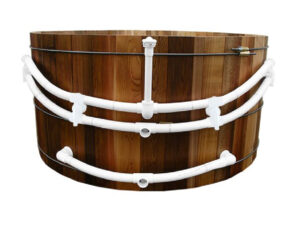SpaceBus
Minister of Fire
Heating water, salty or not, to 101-104 df is not really doing much besides encouraging bacterial growth. I would assume they have some kind of ozone or ionizing system to kill bacteria and other harmful microbes in the water. Plus, human skin is covered in bacteria and other microbes that are salt water resistant. I have been researching ways to clean water without using bromide, chlorine, and other traditional pool chemicals. Just because a group of people use a product does not mean it is safe. Asbestos, arsenic, and many other toxic building materials have been used over history.Heating it, and the fact that it’s salt water (salt itself is a preservative), probably negate any potential threats. Anyways, it’s pretty common over there, and we don’t hear about Norwegians dying off because of it, so I’m just going to assume that it’s safe. If you’re going to worry about something in Norway being dangerous, worry about their roads! Skinny little roads that occasionally reduce from two lanes to one lane, but everybody drives the same speed regardless. THAT got my attention!




